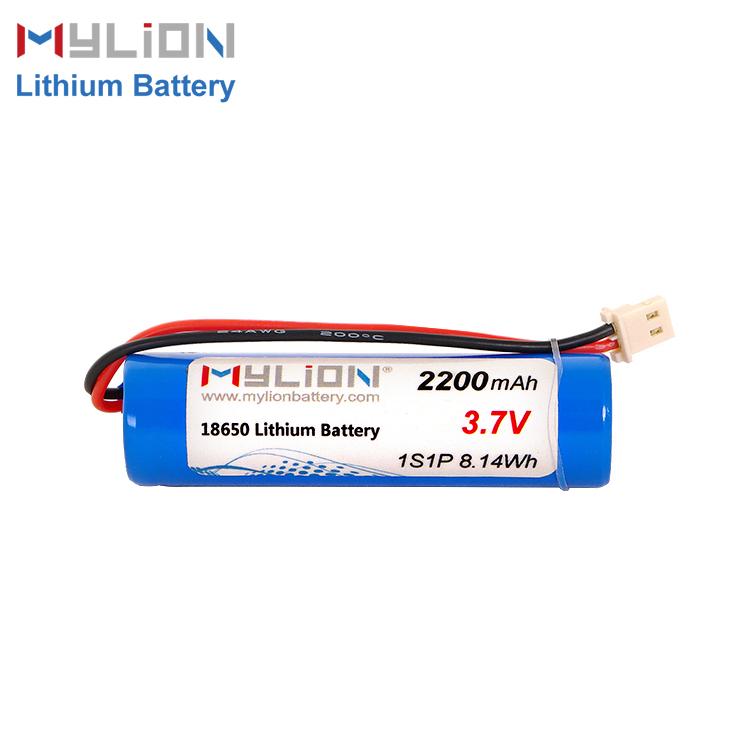Against the background of energy crisis and environmental pollution, lithium-ion batteries, as an ideal energy source for development in the 21st century, have received more and more attention. However, some failure phenomena may occur in the production, transportation, and use of lithium-ion batteries. Moreover, the failure of a single battery will affect the performance and reliability of the entire battery pack, and even cause the battery pack to stop working or other safety issues.

In recent years, there have been many battery-related fire and explosion accidents at home and abroad: the Tesla Model S electric car fire in the United States, the Samsung Note7 mobile phone battery fire accident, the fire in the Wuhan Forte electronics factory, the fire in the Samsung SDI factory in Tianjin, etc…

1. Classification of lithium battery failure
In order to avoid the above-mentioned performance degradation and battery safety issues, it is imperative to carry out lithium battery failure analysis. Lithium battery failure refers to the degradation of battery performance or abnormal use performance caused by some specific essential reasons, and it is divided into performance failure and safety failure.
Performance failures include capacity diving, attenuation of cycle life, abnormal voltage, abnormal current, excessive internal resistance, self-discharge, high and low temperature aging, poor rate performance, and poor consistency.
Safety failures include thermal runaway, short circuit, liquid leakage, flatulence, lithium evolution, expansion deformation, and puncture (squeeze).
2. Reasons for the failure of lithium batteries
The reasons for the failure of lithium batteries can be divided into internal and external causes.
The internal cause mainly refers to the nature of the physical and chemical changes of the failure. The research scale can be traced back to the atomic and molecular scales to study the thermodynamic and dynamic changes of the failure process.
External factors include impact, acupuncture, corrosion, high-temperature combustion, man-made damage and other external factors.

3. Common failure performance and failure mechanism analysis of lithium batteries
Capacity fading failure
“In the standard cycle life test, the discharge capacity should not be less than 90% of the initial capacity when the number of cycles reaches 500 times. Or the discharge capacity should not be less than 80% of the initial capacity when the number of cycle if it is within the standard cycle range Inside, the phenomenon of a sharp decline in capacity is a failure of capacity attenuation.
The root cause of battery capacity decay failure is the failure of materials, and it is closely related to objective factors such as battery manufacturing process and battery use environment. From a material point of view, the main reasons for the failure are the structural failure of the positive electrode material, the transitional growth of SEI on the negative electrode surface, the decomposition and deterioration of the electrolyte, the corrosion of the current collector, and the trace impurities of the system.
Structural failure of positive electrode material: The structural failure of positive electrode material includes crushing of positive electrode material particles, irreversible phase transition, material disorder, etc. During the charging and discharging process of LiMn2O4, the structure of LiMn2O4 will be distorted due to the Jahn-Teller effect, and the particles may even be broken, causing the electrical contact between the particles to fail. The LiMn1.5Ni0.5O4 material will undergo a “tetragonal-cubic crystal system” phase transition during the charge and discharge process. The LiCoO2 material will enter the Li layer due to the transition of Li during the charge and discharge process, causing the layered structure to become chaotic. , Restricting its capacity.
Anode material failure: The failure of graphite electrode mainly occurs on the graphite surface. The graphite surface reacts with the electrolyte to produce the solid electrolyte interface phase (SEI). If excessive growth will lead to a decrease in the lithium ion content in the battery’s internal system, the result is a capacity decline. The failure of silicon anode materials is mainly due to the cycle performance problems caused by their huge volume expansion.
Electrolyte failure: LiPF6 has poor stability and is easy to decompose to reduce the amount of migrating Li+ in the electrolyte. It also easily reacts with trace amounts of water in the electrolyte to generate HF, causing corrosion inside the battery. Poor air-tightness causes the electrolyte to deteriorate, and the viscosity and chromaticity of the electrolyte change, which ultimately leads to a sharp decline in ion transport performance.
The failure of the current collector: the current collector corrodes and the adhesion of the current collector decreases. The HF generated by the failure of the electrolyte will corrode the current collector and generate compounds with poor conductivity, resulting in increased ohmic contact or failure of the active material. During the charging and discharging process, the Cu foil is dissolved at a low potential and deposited on the surface of the positive electrode, which is the so-called “copper precipitation”. The common form of current collector failure is that the binding force between the current collector and the active material is insufficient, which causes the active material to peel off and cannot provide capacity for the battery.
Increased internal resistance
The increase of the internal resistance of lithium batteries will be accompanied by failure problems such as a decrease in energy density, a decrease in voltage and power, and battery heat generation. The main factors leading to the increase of the internal resistance of lithium-ion batteries are divided into key battery materials and battery use environment.
Key battery materials: micro cracks and breakage of the positive electrode material, destruction of the negative electrode material and excessive surface SEI, electrolyte aging, active material and current collector separation, active material and conductive additives contact deterioration (including the loss of conductive additives), Diaphragm shrinkage hole is blocked, battery tab welding is abnormal, etc.
Battery use environment: the ambient temperature is too high/low, overcharge and over discharge, high rate charging and discharging, manufacturing process and battery design structure, etc.

Internal short circuit
Internal short circuits often cause self-discharge, capacity degradation, local thermal runaway and safety accidents of lithium-ion batteries.
Short circuit between copper/aluminum current collectors: untrimmed metal foreign bodies pierce the diaphragm or electrode during battery production or use, and the displacement of the pole pieces or tabs in the battery package causes the positive and negative current collectors to contact.
Short circuit caused by diaphragm failure: diaphragm aging, diaphragm collapse, diaphragm corrosion, etc. will cause the diaphragm to fail. The failed diaphragm loses electrical insulation or the gap becomes micro-contact between the positive and negative electrodes. Then there will be severe local heating, and continued charging and discharging will spread to the surroundings. , Resulting in thermal runaway.
Impurities cause short circuits: Failure to remove transition metal impurities in the positive electrode slurry will cause piercing of the separator or promote the formation of negative electrode lithium dendrites, leading to internal short circuits.
Short circuit caused by lithium dendrites: Lithium dendrites will appear in places where local charges are uneven during the long cycle, and the dendrites will penetrate the diaphragm to cause internal short circuits.
In the process of battery design and manufacturing or battery pack assembly, unreasonable design or excessive local pressure can also cause internal short circuits. Internal short circuit will also occur under the induction of battery overshoot and overdischarge.
Gas production
During the battery formation process, the gas production phenomenon that occurs when the electrolyte is consumed to form a stable SEI film is normal gas production, but the phenomenon of excessive consumption of electrolyte and oxygen release from the cathode material is abnormal gas production. It often appears in soft pack batteries, which will cause the internal pressure of the battery to be too large and deform, break the packaging aluminum film, and internal battery contact problems.
Trace moisture in the electrolyte or the electrode active material is not dried, causing the lithium salt in the electrolyte to decompose to produce HF, corrode the current collector Al, destroy the binder, and produce hydrogen. Electrochemical decomposition of chain/cyclic esters or ethers in the electrolyte caused by improper voltage range will produce C2H4, C2H6, C3H6, C3H8, CO2, etc.
Thermal runaway
Thermal runaway refers to the rapid rise of the internal or overall temperature of the lithium-ion battery, and the heat cannot be dissipated in time, and a large amount of it accumulates inside and induces further side reactions. The factors that induce thermal runaway of lithium batteries are abnormal operating conditions, such as abuse, short circuit, high magnification, high temperature, extrusion, and acupuncture.
Lithium precipitation is the precipitation of metallic lithium on the surface of the negative electrode of the battery, which is a common phenomenon of aging and failure of lithium batteries. Lithium evolution will reduce the active lithium ions in the battery, causing capacity failure, and the formation of dendrites that pierce the diaphragm, which will cause excessive local current and heat generation, and ultimately cause battery safety problems.





